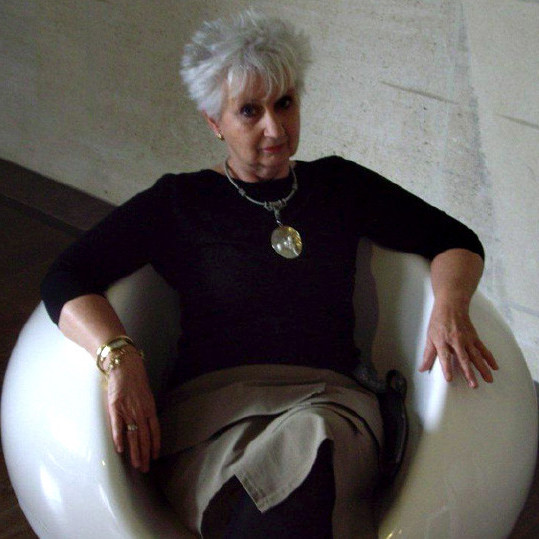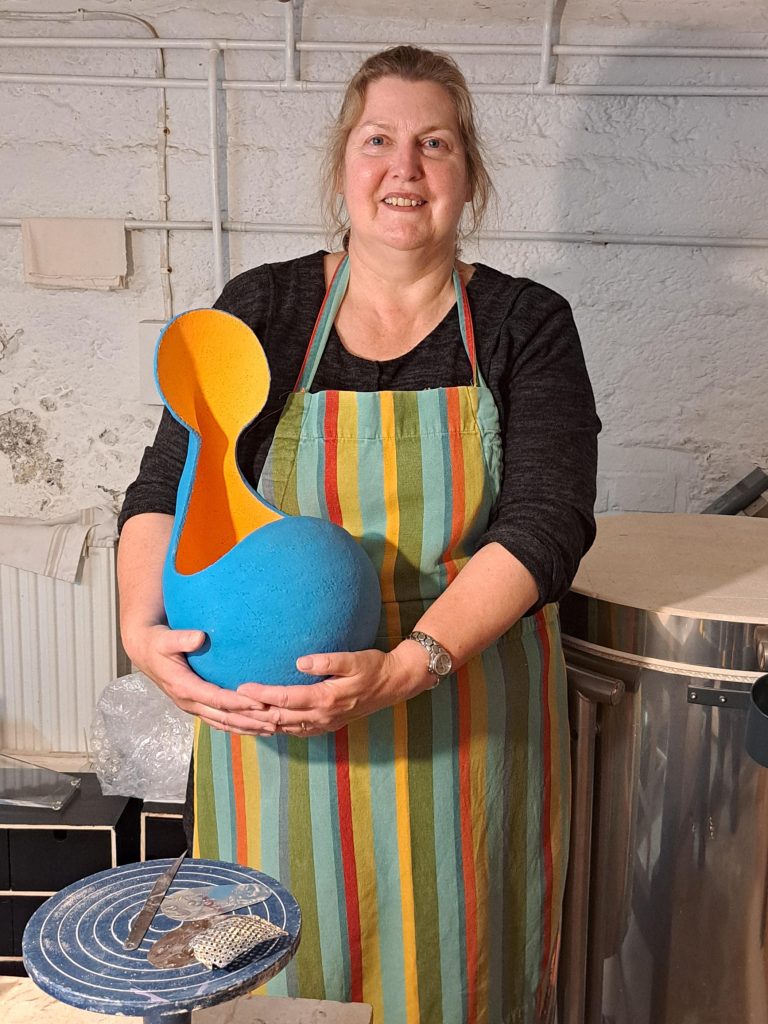Anna Phillips Sculptor
Colour is so important and bright in your work – When did this happen?
Colour burst onto my scene after working with black clay for an extended period, this is probably about 8 / 9 years ago. The introduction of such vibrancy was a 180o switch from the muted blackness and patinated gold and silver leaf tones I had been working with.
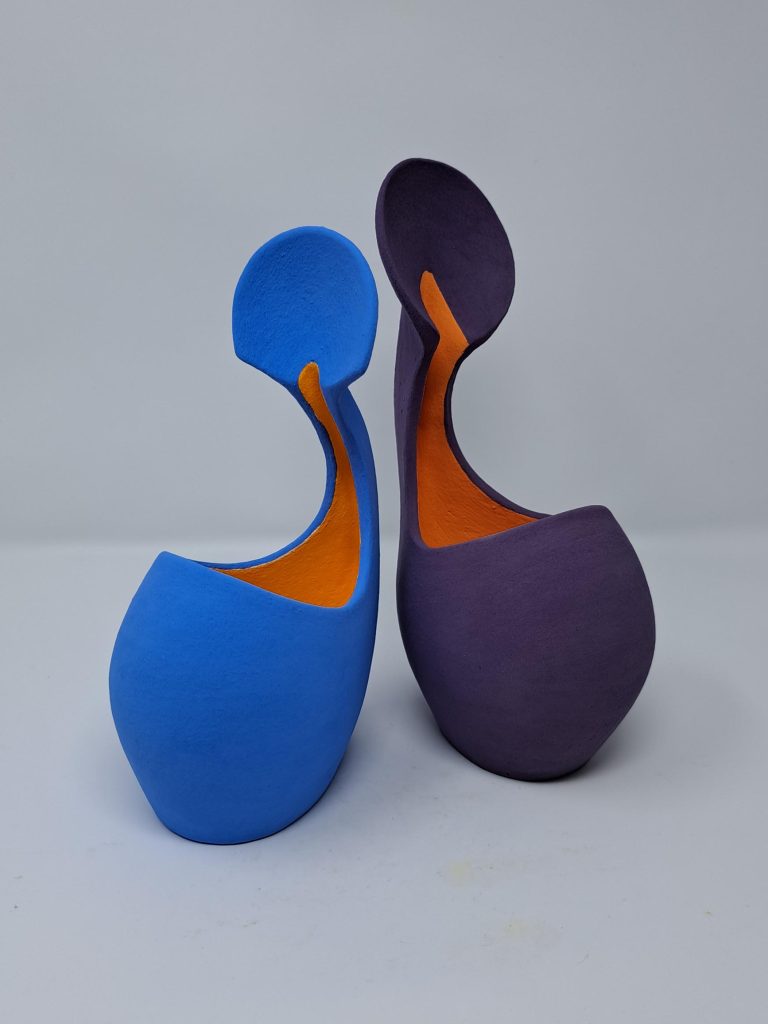
I have asked about your colour but your shapes also dominate your work, discuss.
My shapes have evolved over the years – the current forms I am using reflect back as an evolution of shapes I was making approximately 35 years ago – the shapes have developed but it is still work from the same genus of form.
How is your work related to the human form?
I have completed wall pieces in the past however I always revert to making vessels; pots hold the imprint of the maker in the same way a human form blends the genes of the parents, both contain parts of beauty and imperfection and, as a pot is a vessel to contain liquid, dust or air, so the human form is a holder of the individuals spirit and essence of being. I also enjoy life drawing people – my work reflects an abstraction of aspects of these forms.
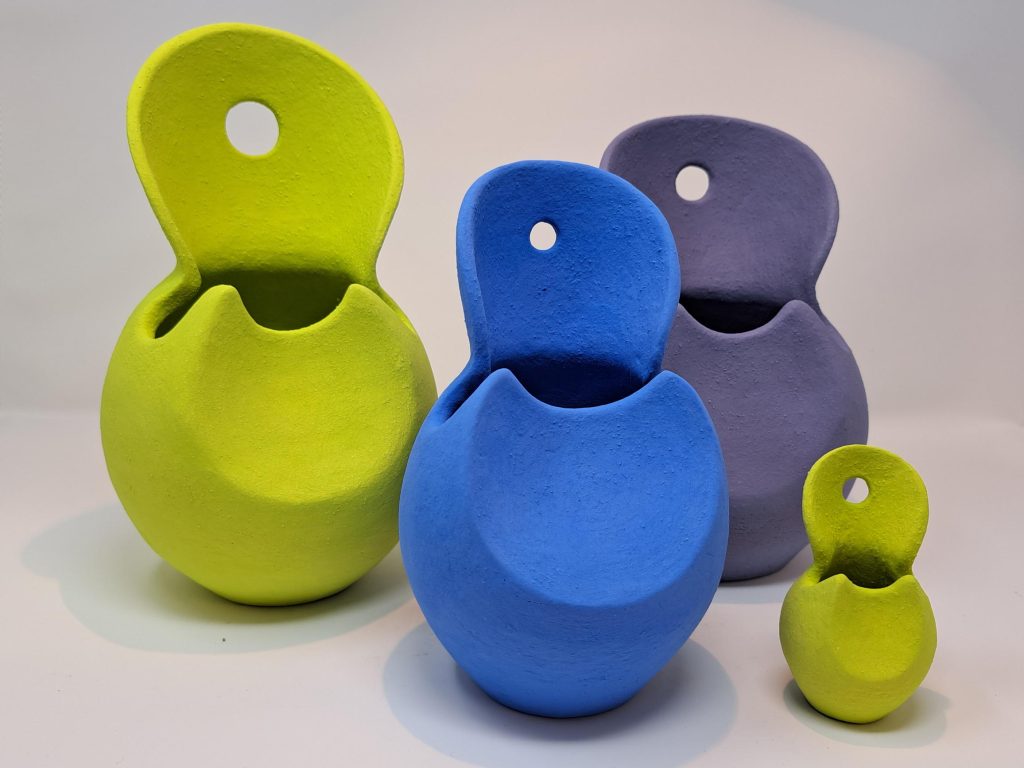
How do you find having your studio at your home?
Having a home studio is both an asset and a downfall. It is good to be able to access the studio 24/7, to check on a piece’s drying progress and work when the mood takes you even if that is at 3am when the rest of the household sleeps. On the other side there are always distractions of the phone, doorbell and household chores that require attention. I must be disciplined in setting myself set studio times and fitting in domestic demands around this.
How do you achieve two colours separating e.g. yellow inside and orange outside? All my colour is applied by brush by hand, there are no aids to control the lines – this is achieved by time, patience, a steady hand and remembering to breathe!
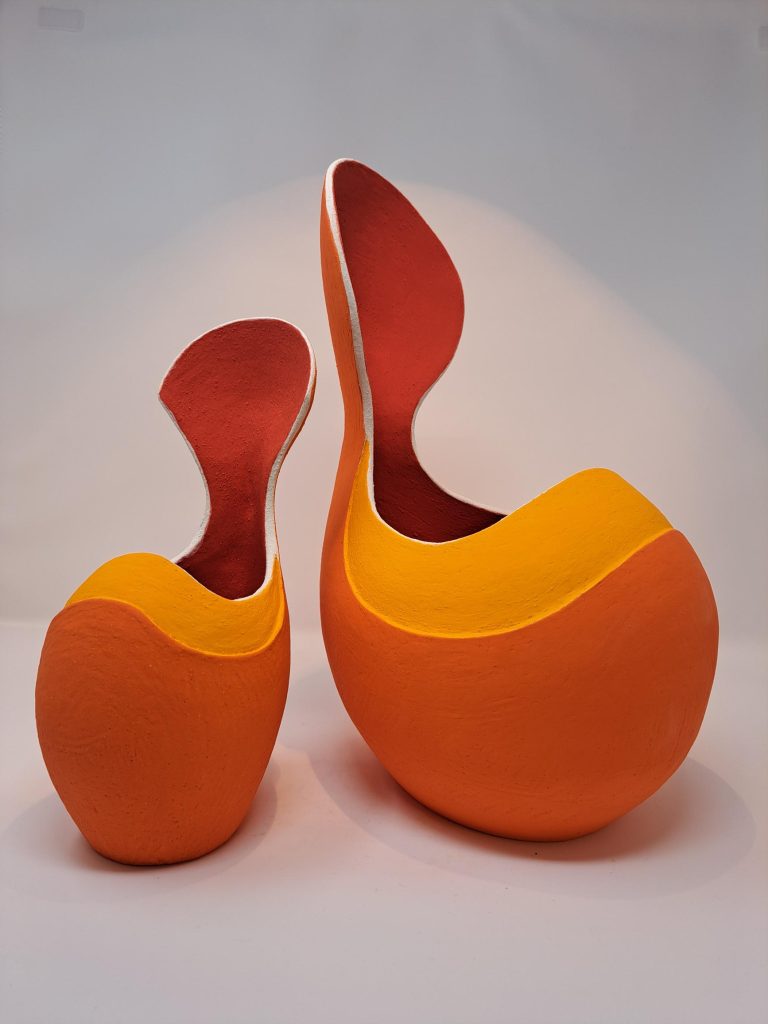
What are your colour combinations?
Colour combinations ebb and flow. My mood decides them, however the most popular with the public appear to be an orange interior with mid-blue exterior. I look to nature for inspiration; it is not constrained by colour charts and can produce some quite outrageous combinations.
Where do you get your inspiration?
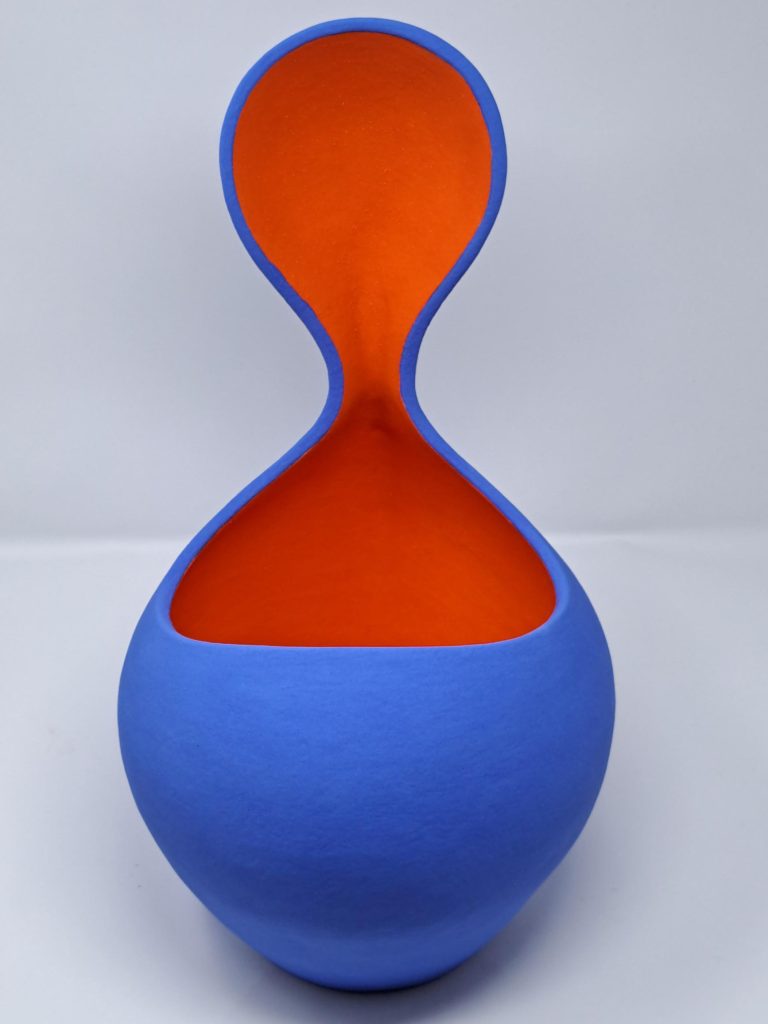
Inspiration comes from many sources; – medieval armour, insects, modern dance, flowers and people. My vessels have bellys, necks and loose references to a head, and influence from the human form, armoury and insects can be found running through it all.
Comment on your other work using black with patterns in patina silver / gold leaf.
This work developed when I first encountered black clay. I enjoyed creating carved patterns in the surface which, when fired, I would colour in blocks of gold and silver leaf that I then patinated to create an age look to the surface. I stopped making this work as the decorative process of working with the leaf caused me eye pain – I felt this was my body telling me it was time for a change, that’s when the colour work exploded from within, like a kickback from working with darkness.
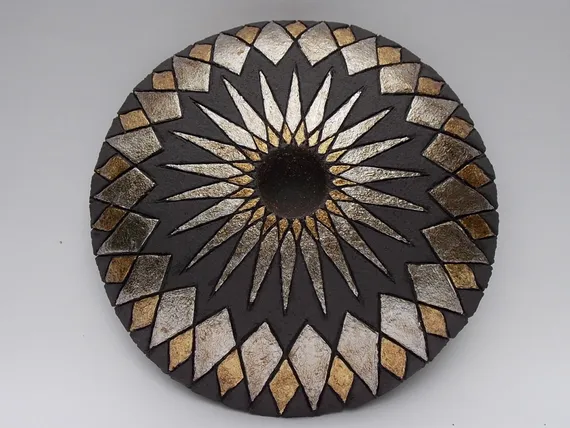
Where do you source your clay?
Clay is sourced from commercial suppliers and at the local materials store. I am currently working with the Earthstone Ashraf Hanna clay body as it has a very white firing clay body which contains a large proportion of molochite which enables me to create the forms I make and for them to withstand the heat of the kiln with minimal distortion.
How large can you make your ceramics and why?
I am restricted by kiln size, currently the largest dimensions I am able to make are 60cm high by 50cm wide by 60cm deep.
Some of your ceramics become outdoor sculptures – does discuss.
My pieces are all fired to vitrification and I have made pieces specifically for outdoor display – the difference with these being ensuring that they can drain effectively and allow surface water run-off rather than pooling, and be weatherproof – well frost hardy – I still wouldn’t recommend leaving any ceramic out in the snow and ice.
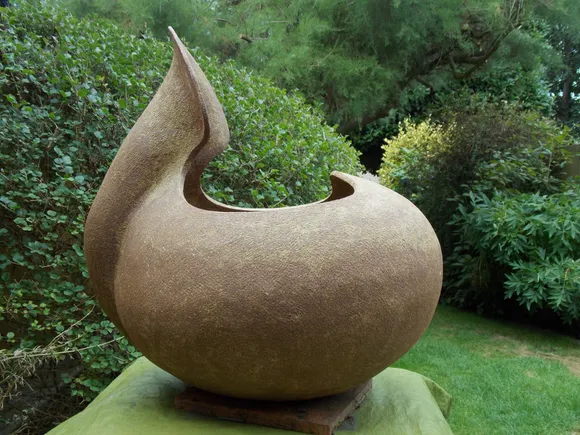
Do you take commissions?
I have completed commissions; however, I have to be really engaged with work to feel relaxed in making it. Regularly commissions come through as requests for a specific size or colour way rather than for installation pieces. I enjoy making the pieces I wish to make and feel that this is communicated within the product. Clay is unforgiving and if you find yourself trapped making a piece you do not enjoy and feel fully comfortable with, I believe that this shows through in the finished article. I want the plastic earth that I sculpt with to show only positivity from its maker, not a struggle or any negativity.
How involved does the purchaser become?
Purchasers tend not to be involved, my work has been described as “marmite”, people either enjoy and get the work, or the colours and forms turn people off totally!
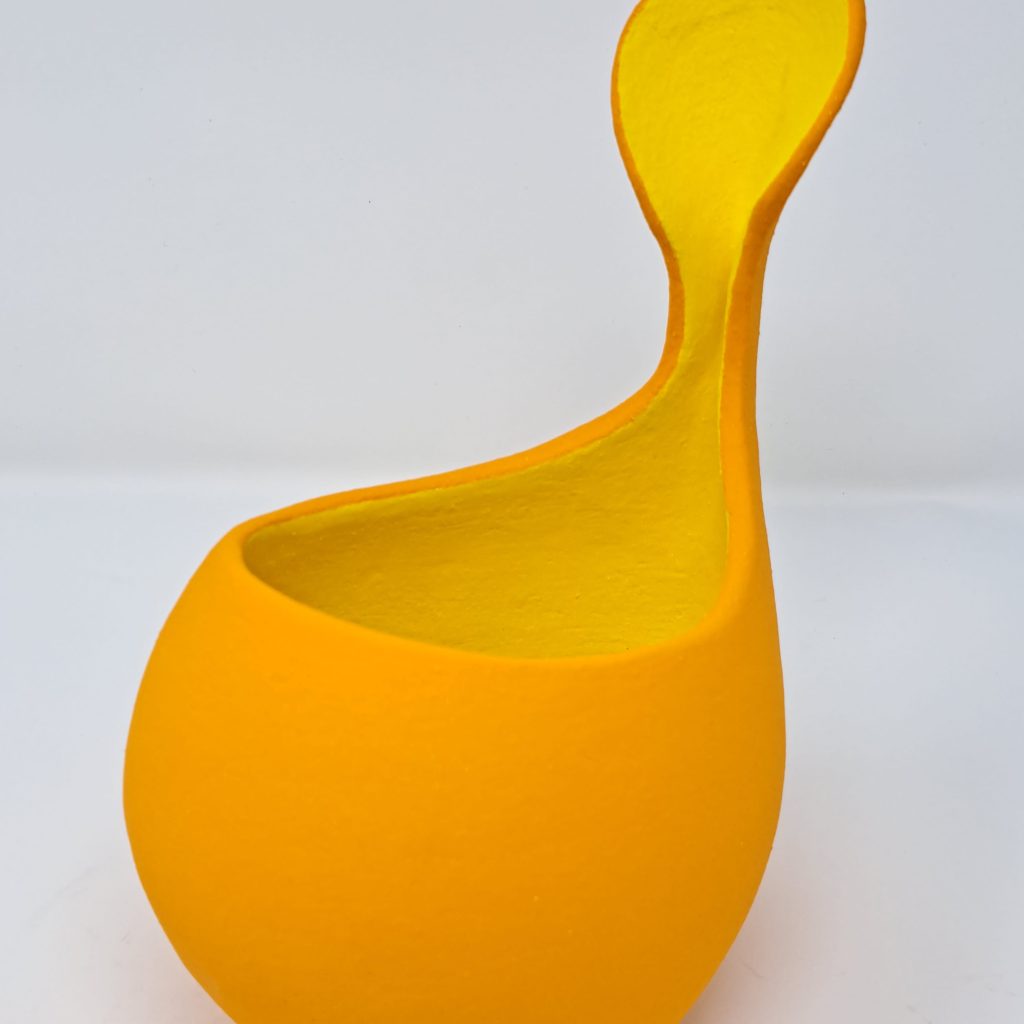
What is one piece that has been hard to let go and why?
A piece I created back in the studio of my first ceramic tutor. Having completed college we spent a few weeks working together. It was a pot that she had admired greatly as I was creating it and the piece was raku fired, it was highly successful and I knew that I would never be able to recreate the fire effects, I handed it over, still warm, as a thank you for her friendship, support, tuition and belief in my capabilities.
Do you keep a section of your work for prosperity?
Yes, I do have a selection of pieces I have kept, these are few but serve as a reminder of different stages in my life and development as a maker.
Contact:
Anna Phillips
www.annaphillipsceramics.co.uk
Instagram – annaphillipsceramics
apceramics@hotmail.co.uk
Deborah Blakeley, Melbourne, Australia
Interview by Deborah Blakeley, August 2025
Images on these pages are all rights reserved by Anna Phillips

Think a colleague or friend could benefit from this interview?
Knowledge is one of the biggest assets in any business. So why not forward this on to your friends and colleagues so they too can start taking advantage of the insightful information the artist has given?
Other artists you may be interested in:

